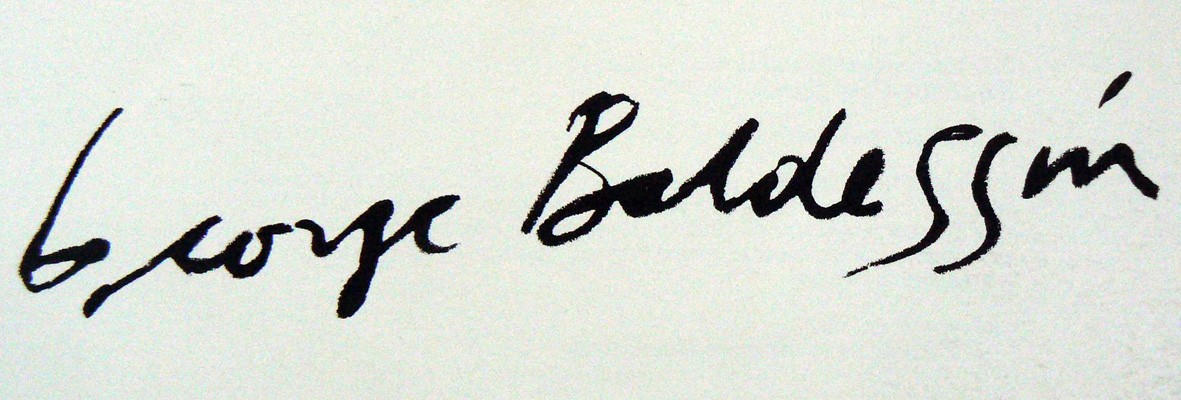Another guest blog by Normana Wight introduces the artists’ book ‘George Baldessin 77’. Having personally known George, Normana’s review reflects not only on the item in hand, but also the artist that she knew.

‘George Baldessin 77’ is unique; a festive little book; made to celebrate Christmas 1977. It is a treasure made by George Baldessin, his artist wife Tess, and their two young boys, Ned and Gabriel.
It was a greeting and gift for Tate Adams, George’s teacher and patron, and his wife Glen.
Many artists do this sort of thing, but many people are not so aware of the pleasure of giving some little thing of yourself on occasions like Christmas, Easter, Birthday. It’s not always necessary to spend buckets of money!
The book - as- Christmas gift has the household of four contributing throughout; work by the adults interspersed with children’s lively works in glowing colour.
It’s obviously not a ‘serious’ artwork, but is a powerful and lasting evocation of love and generosity.
Tate Adams, being a seasoned maker of beautiful books, has had this Christmas gift bound (by Fred Pohlmann) in light tan linen, titled in gold and popped into a slightly darker slip case. Result: a gorgeous object!
George, sadly dead at 39 in a car accident in 1978, has continued to be a very popular artist with characteristic images from 1960’s cinema, circus, Mary Magdalene, inner city living, and hospitality. Over a twenty year period, his work in both sculpture and printmaking reflect these interests.
Born near Treviso in the Veneto region of Italy just before World War Two, brought up in post-war Australia, he and his father became citizens when George was about 15. His mother was already one. George always brought a European sensibility to his work. But also played enthusiastic cricket!
Jenny Zimmer in her entry in the Australian Dictionary of Biography, says
“If enigmas emerged, they can be attributed – at least in part – to an identity torn between post war Europe and nascent multicultural Australia.”
Comments
Your email address will not be published.
We welcome relevant, respectful comments.